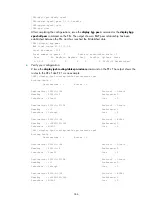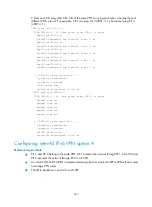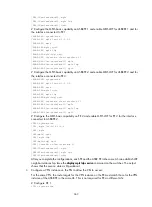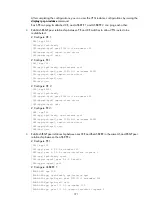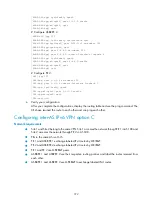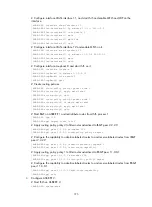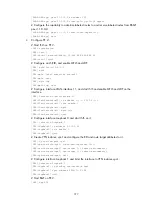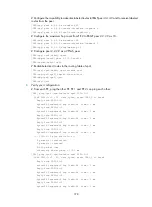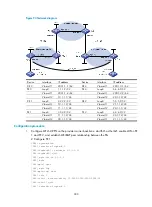
366
[PE2-bgp] ipv6-family vpnv6
[PE2-bgp-af-vpnv6] peer 1.1.1.9 enable
[PE2-bgp-af-vpnv6] quit
[PE2-bgp] quit
After completing the configurations, issue the
display bgp peer
command or the
display bgp
vpnv6 all peer
command on the PEs. The output shows a BGP peer relationship has been
established between the PEs, and has reached the Established state.
[PE1] display bgp peer
BGP local router ID : 1.1.1.9
Local AS number : 100
Total number of peers : 1 Peers in established state : 1
Peer AS MsgRcvd MsgSent OutQ PrefRcv Up/Down State
3.3.3.9 100 2 6 0 0 00:00:12 Established
6.
Verify your configuration:
# Issue the
display ipv6 routing-table vpn-instance
command on the PEs. The output shows the
routes to the CEs. Take PE 1 as an example:
[PE1] display ipv6 routing-table vpn-instance vpn1
Routing Table :
Destinations : 3 Routes : 3
Destination: 2001:1::/64 Protocol : Direct
NextHop : 2001:1::2 Preference: 0
Interface : Vlan11 Cost : 0
Destination: 2001:1::2/128 Protocol : Direct
NextHop : ::1 Preference: 0
Interface : InLoop0 Cost : 0
Destination: 2001:2::/64 Protocol : BGP4+
NextHop : ::FFFF:303:309 Preference: 0
Interface : NULL0 Cost : 0
[PE1] display ipv6 routing-table vpn-instance vpn2
Routing Table :
Destinations : 3 Routes : 3
Destination: 2001:3::/64 Protocol : Direct
NextHop : 2001:3::2 Preference: 0
Interface : Vlan12 Cost : 0
Destination: 2001:3::2/128 Protocol : Direct
NextHop : ::1 Preference: 0
Interface : InLoop0 Cost : 0
Destination: 2001:4::/64 Protocol : BGP4+
NextHop : ::FFFF:303:309 Preference: 0
Interface : NULL0 Cost : 0















